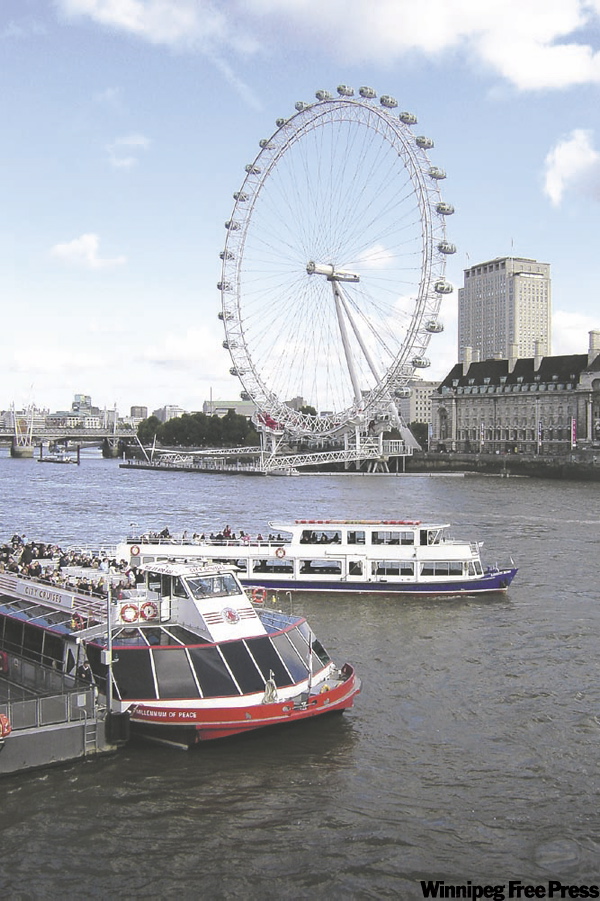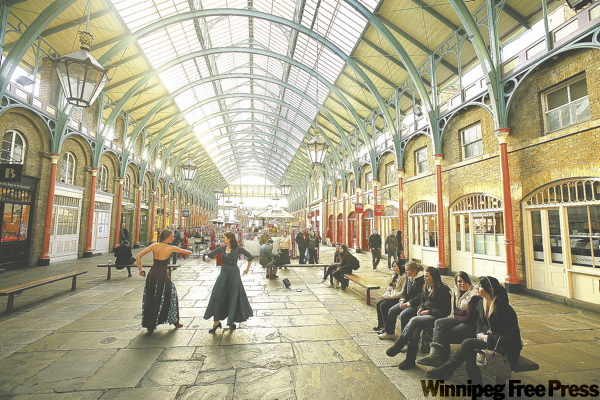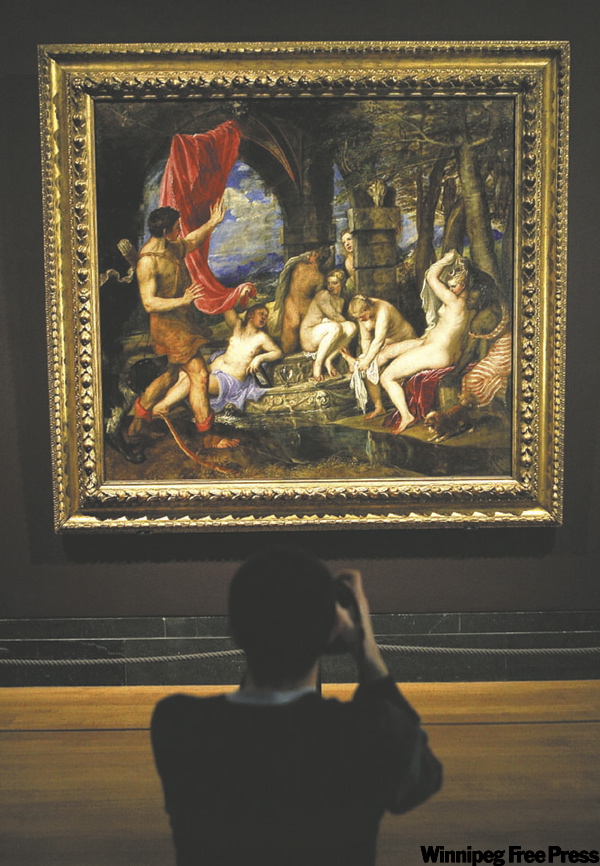A penny-pincher’s guide to London
It's the most expensive city in the world to visit -- but it doesn't have to be
Advertisement
Read this article for free:
or
Already have an account? Log in here »
To continue reading, please subscribe:
Monthly Digital Subscription
$0 for the first 4 weeks*
- Enjoy unlimited reading on winnipegfreepress.com
- Read the E-Edition, our digital replica newspaper
- Access News Break, our award-winning app
- Play interactive puzzles
*No charge for 4 weeks then price increases to the regular rate of $19.00 plus GST every four weeks. Offer available to new and qualified returning subscribers only. Cancel any time.
Monthly Digital Subscription
$4.75/week*
- Enjoy unlimited reading on winnipegfreepress.com
- Read the E-Edition, our digital replica newspaper
- Access News Break, our award-winning app
- Play interactive puzzles
*Billed as $19 plus GST every four weeks. Cancel any time.
To continue reading, please subscribe:
Add Free Press access to your Brandon Sun subscription for only an additional
$1 for the first 4 weeks*
*Your next subscription payment will increase by $1.00 and you will be charged $16.99 plus GST for four weeks. After four weeks, your payment will increase to $23.99 plus GST every four weeks.
Read unlimited articles for free today:
or
Already have an account? Log in here »
Hey there, time traveller!
This article was published 05/09/2009 (5902 days ago), so information in it may no longer be current.
LONDON may have offered writer Samuel Johnson "all that life can afford," but 300 years later, it is the most expensive city in the world to visit.
A survey by the Telegraph newspaper compared the cost of visiting the top 10 tourist attractions in 11 international cities, including London, Paris and New York. A family of four would spend over $950 Cdn visiting Madame Tussauds, the London Eye, and Buckingham Palace.
For cost-conscious travellers, the choice is to miss all the wonderful history, museums and shopping London has to offer, or find a way to make every penny count. In other words, to spend like Scrooge, but party like it’s 1709.

Penny-pinchers look for ways to save even before they arrive in London. For example, fly Monday to Thursday and save up to $200 a ticket. Check to make sure what cancellation or medical insurance your credit card offers instead of buying extra. Shop around to determine which bank or credit union charges the least on overseas ATM withdrawals.
Once your plane lands, there is a variety of ways to get into central London. From Heathrow (Air Canada), the cheapest option (about $8 one-way) is The Tube . . . when there’s not a strike on. But remember it’s not geared for tourists and luggage, so pack light.
More convenient is the Heathrow Express — a 15-minute high-speed train to Paddington Station ($64 return). Or consider a car service that delivers you to the front of your hotel for $124 return, for a one-hour trip for two.
From Gatwick Airport (into which most charter airlines fly), the National Express Coach to Victoria station costs about $25 (return), but can take more than an hour and a half. A First Capital Connect train (45 minutes, $44 return) or the Gatwick Express (30 minutes, $68 return) are other options.
The cheapest way to get around the city is by Tube. Tourists can buy a one-, three-or a seven-day Travelcard (from $11 to $52) that covers the bus system and one-third off a boat trip on the Thames.
An alternative to the Travelcard is the Oyster, a pay-as-you go pass you top up with cash. You can either keep any unused funds for your next trip, or cash the card in at the end of your holiday.
Accommodation in London is, next to airfare, your biggest expense. Hotels and bed and breakfasts are popular — but costly. Savvy travellers consider hostels, university accommodation, rental apartments, housing swaps and house-sitting.
Hostels are cheap at $40 a night, but you sleep in a dorm room and share a bathroom. Universities, like the London School of Economics, make residence accommodation available during the summer — the most expensive time to visit London. Rooms cost from $66 for a single. Many have ensuite bathrooms.
Rental apartments on a short-term basis — the English call this self-catering — can seem expensive (from $1,200 a week), but are more cost-efficient if you are travelling with children, or in a group.

Another cheap and ‘out of the box’ option is to house-sit (for a $50 membership). In return for free digs, you may have to water plants and walk the family dog.
If you do stay in a hotel or B&B, ask for cash discounts, check websites for Internet deals, and don’t pay extra for breakfast in a hotel. Also consider a combined hotel and theatre package.
Trying to save money on meals in London is easy if you are flexible about where you eat, and when. If you’re staying in a bed and breakfast, fill up on the fry-up. You’ll be able to skip lunch and splurge on dinner.
Pubs, which have great food — and you don’t have to order a drink — are cheaper at lunchtime. Pack a picnic, fill up at a noodle place like Wagamamma, eat Indian, check out the cafeterias in the basements of London churches and don’t turn your nose up at a meal at the beloved English ‘caff’.
Tourists often ignore the dozens of London museums that are free. Places like the Imperial War Museum, and the Natural History and Science museums have amazing, interactive displays, geared toward adults and children alike. See masterpieces at the National Gallery, mummies at the British Museum and swinging ’60s fashion at the Victoria and Albert Museum.
And don’t forget all the free things you can do in London. Watch the street entertainers in Covent Garden, sit in a TV audience, fly a kite on Hampstead Heath, or listen to a new band at HMV’s store on Oxford Street.
— Canwest News Service
Online help for cheapskates

Free TV tickets: http://www.applausestore.com/
Housing swaps: http://www.homelink.ca/
Housesitters: http://www.housecarers.com/
://www.londonforfree.net/walks
Journey planner: http://journeyplanner.tfl.gov.uk

